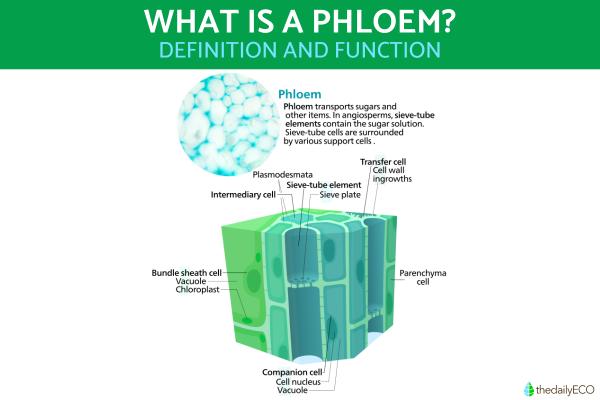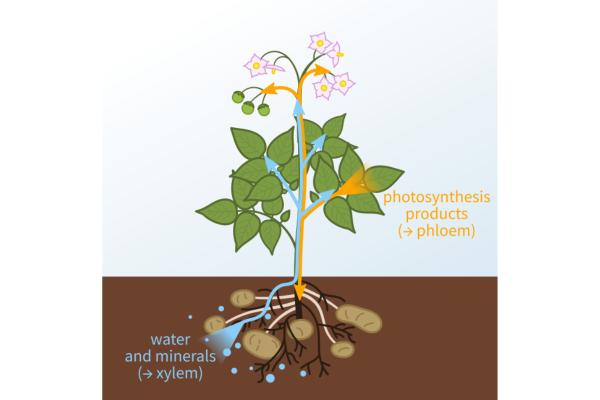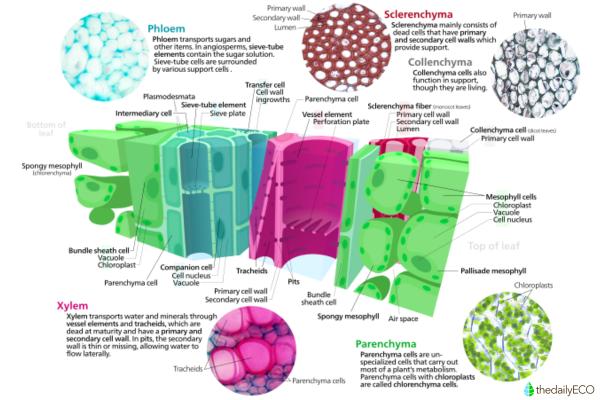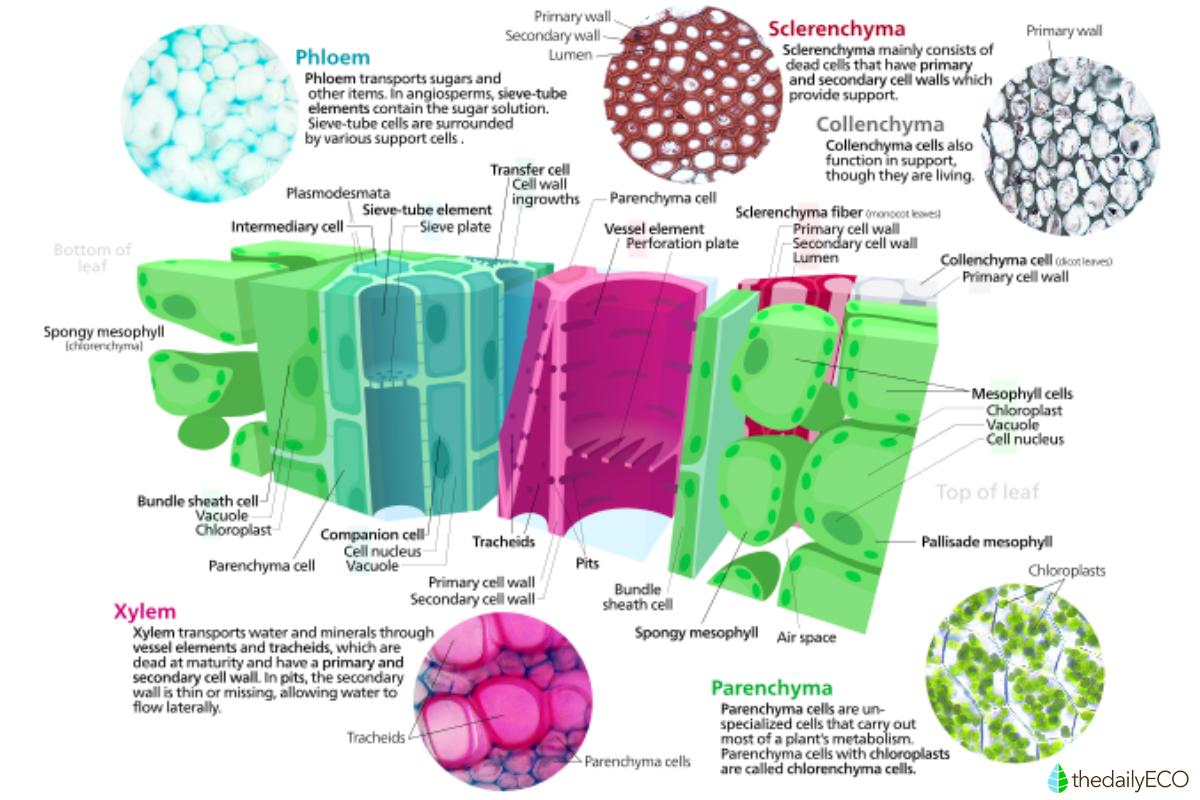What is the Phloem and Its Function?


Plants have different tissues which carry out the necessary functions which allow them to grow and survive. Not all plants have the same tissues to carry out these processes. One of the most important ways to distinguish between different plants is whether they are vascular or non-vascular. Vascular plants include all flowering and non-flowering plants, as well as plants such as ferns. The xylem and phloem are important tissues which are only found in vascular plants. They are responsible for transporting substances beneficial to the plant organism.
At thedailyECO, we discover more about vascular plant tissues by asking what is the phloem in plants and its function? We also look at the different types of phloem that can be found in plants and discover how it is different from the xylem.
What is phloem in plants?
The phloem is responsible for transporting nutrients form the source to the sink. This means the nutrients produced in the aerial parts of the plant to the non-photosynthetic sector such as roots, stems and developing fruit. Its main function is to transport and distribute the sap produced throughout the plant for its management, absorption and storage. It also transports amino acids and signaling molecules such as hormones.
Also called the bast, the phloem contains various specialized plant cells capable of forming walls through which nutrients are channeled.
- Parenchyma cells: although not highly specialized, these cells are found in varying quantities in primary and secondary phloem. Their main function is a supporting role to ensure the movement of sieve compounds that transport sugar, in addition to storing other substances such as oils and tannins. They are not primarily used for the transportation of sugars.
- Sieve tubes: these are individual, flattened cells with longitudinal rows that communicate with the sieve plates located in the terminal walls. They are enucleated (do not contain nuclei) and are typical of plants belonging to the angiosperm group. The sieve plates have pores that completely penetrate the wall, allowing for the flow of sap between cells.
- Companion cells: unlike parenchyma cells, companion cells are highly specialized. They are unique to angiosperm plants, with each companion cell associated to a part of the sieve tube. They are involved in protein transport, specifically providing ATP to allow the sieve tubes to function.
The origin of the word phloem comes from the Greek word phloios which translates as ‘bark’. From this word, the famous botanist Karl Wilhelm von Nageli coined the term phloem to define one of the main conductive tissues of vascular plants in 1873.
While all phloem carry out the same basic functions, we can distinguish two types of phloem in plants:
Primary phloem
This begins in the procambium, also known as the primary meristem. It is divided into two sections:
- Protophloem: appears in certain areas of plants during the growth stage
- Metaphloem: appears after the maturation process.
The protophloem does not function after maturation, but the metaphloem continues to do so.
Secondary phloem
This is formed in the vascular cambium. This is located along the length of the stems and roots. It is made up of cells arranged in two 90-degree paths, both axial and radial. The axial cells are upright and parallel in the central zone and are made up of sieve units and parenchymal cells. The radial cells are grouped in rays perpendicular to the axis and are also made up of parenchymal cells, although they lack secretory ducts.
The diagram of the phloem and xylem below shows the location of the source and the sink, i.e. photosynthetic and non-photosynthetic parts of a plant.

Function of phloem
Phloem is the vascular tissue responsible for transporting the sugars and nutrients resulting from photosynthesis. Once raw sap is converted into processed sap (known as phloem sap), the phloem transports it to all the plant's tissues, from the leaves to the roots. This means it can be consumed or stored according to the plant's needs. Another diagram below depicts the phloem structure in more detail.
This process carried out by the phloem is also known as translocation. It occurs when the sugars accumulated during plant development are transported to the so-called meristems, another type of plant tissue responsible for developing new cells to enhance and improve plant development. This process usually occurs especially during spring, the time of year when plants are most active.
Discover more about the importance of the phloem in biology with our article on the difference between vascular and non-vascular plants.

Difference between xylem and phloem
We've created a list of the main differences between xylem and phloem. To obtain a good understanding of why these types of plant tissues are so important for plants, we have explained their differences in terms of structure and function:
- Transportation: the phloem is responsible for transporting the processed sap, which is the result of the photosynthesis process carried out by the plant. The xylem is the conductive tissue that transports the raw sap (water and minerals) for its use in photosynthesis.
- Materials: the main function of phloem is to transport the nutrients necessary for optimal plant development, while xylem is primarily responsible for transporting water and mineral salts.
- Direction: the phloem transport system works bidirectionally, transporting nutrients throughout the plant. In the case of xylem, it is unidirectional.
- Destination: the phloem transports nutrients from the leaves to the roots, and to other parts of the plant. The xylem only transports water and minerals from the roots to the leaves.
- Cells: the phloem is made up of a series of cells with soft cell walls, while the xylem is made up of cells with lignified cell walls.
One of the most important photosynthetic parts of a plant are its leaves, organs which can vary greatly in structure and appearance. Learn more about basic plant anatomy with our article explaining the different parts of a leaf with diagrams.
If you want to read similar articles to What is the Phloem and Its Function?, we recommend you visit our Biology category.







